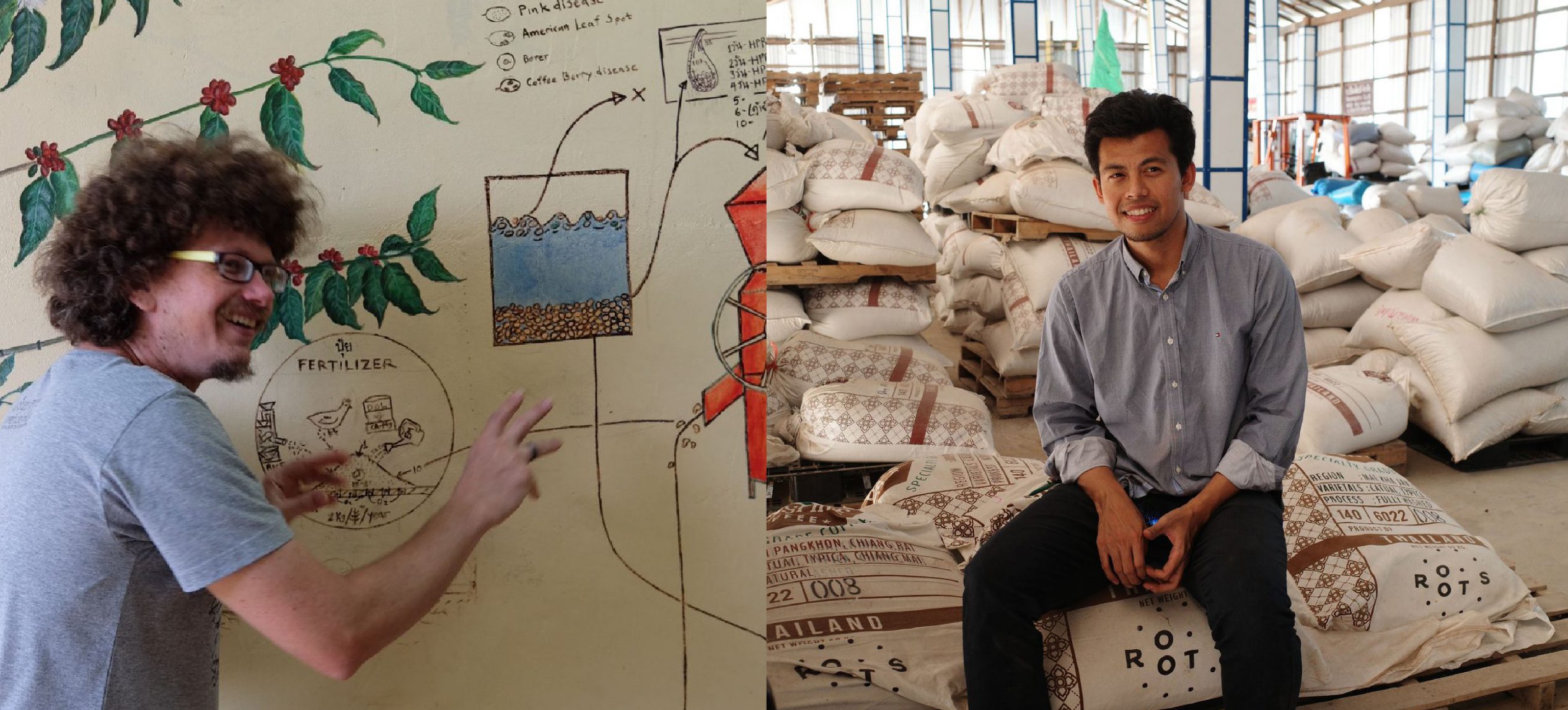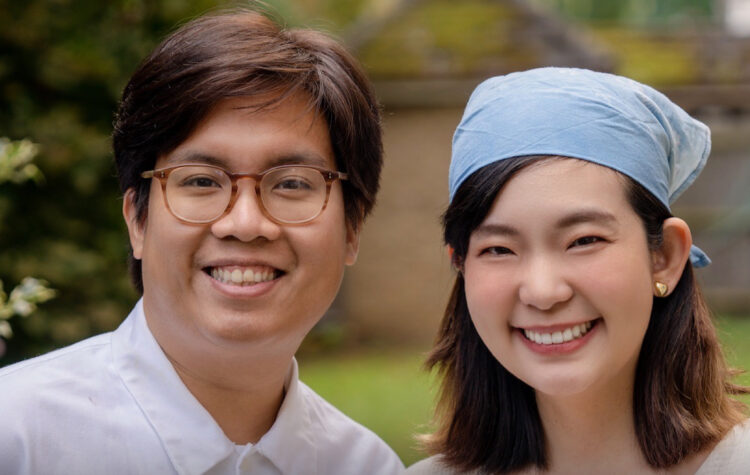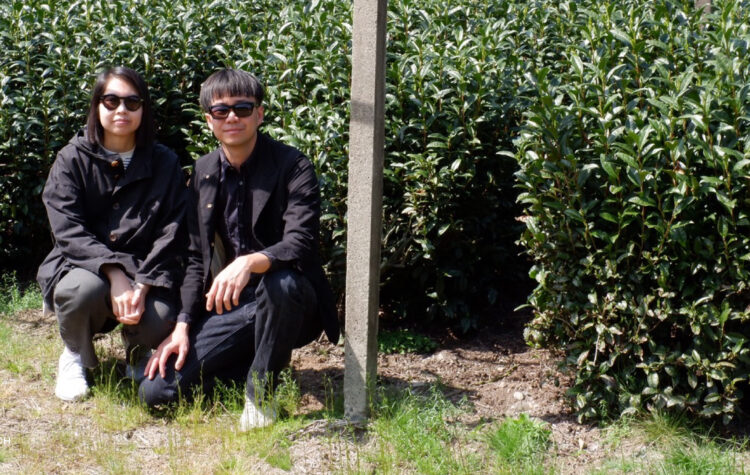“There’s so much more to discover, we’ve got a long way ahead of us,” P’ Kaleb and P’ Fuadi on their experience developing Robusta.
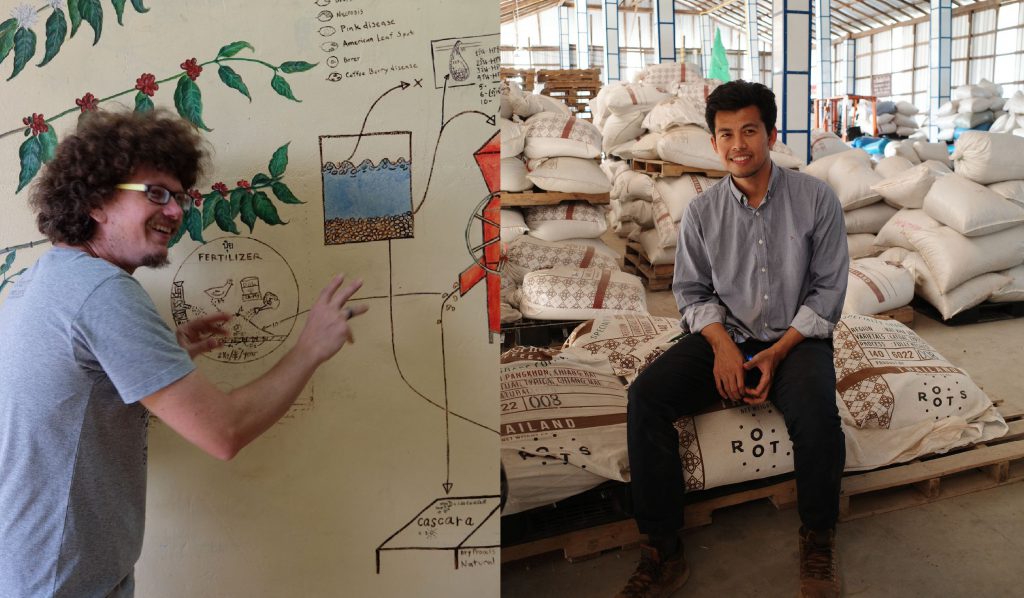
The growing popularity of Specialty coffee has made high-quality Arabica readily available to everyone. Despite this progress, it has had an adverse effect on Robusta, pushing it further and further away from the eyes of coffee enthusiasts.
Though Robusta has a ‘cheap’ image as just ‘raw material for instant coffee,’ it did not escape the interests of Kaleb Jordan, a coffee producer from Baan Maneepreuk in Nan Province, and Fuadi Pitsuwan, founder of Beanspire Coffee.
Both P’ Kaleb and P’ Fuadi believe in the potential of Robusta coffee and its comparable quality to Arabica, which is why they are working together on the development of ‘Fine Robusta,’ or Robusta that is more meticulously processed than the average. They hope that by improving its quality, they can change people’s perceptions of it in the future.
P’ Kaleb and P’ Fuadi share with us the story behind their motivations and intentions:
Q: When did you become interested in Robusta?
P’ Fuadi: Robusta is a coffee species that has long been undervalued and stigmatized as inferior. People in the coffee industry and coffee drinkers are now giving value to Specialty coffee, which, in the grand scheme of things, is about equality, opportunity, and mutual respect, including relationships that extend beyond buyer and seller.
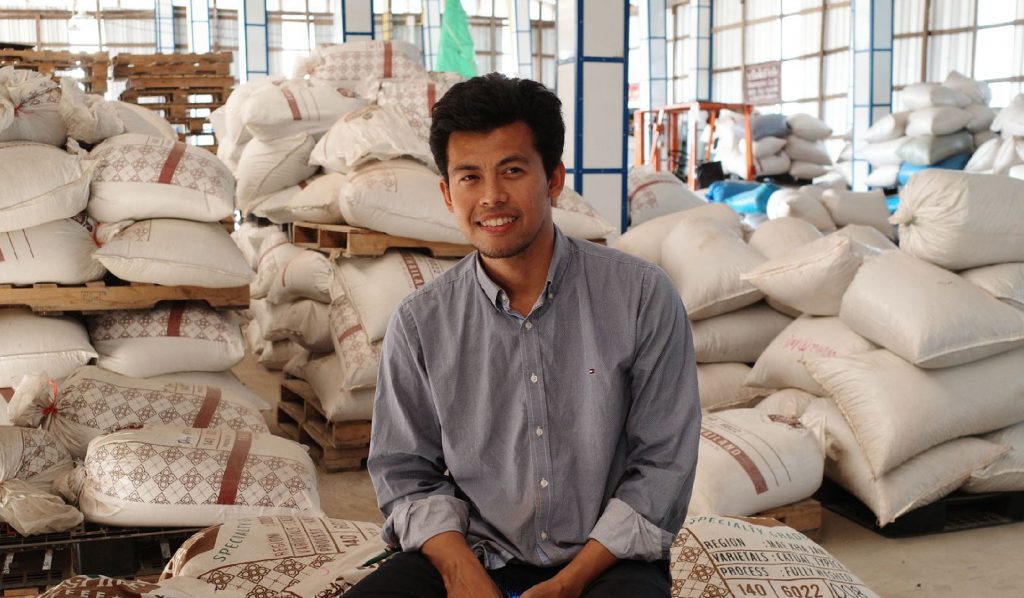
This means that if everyone cares about specialty coffee, we should not be overlooking Robusta because Robusta farmers account for 40-50% of coffee farmers worldwide. Instead, we should be placing a much higher value on it. P’ Kaleb and I have been talking about Robusta since the first time we met, and at the time, there was a project in Nan Province encouraging coffee farmers to grow Robusta.
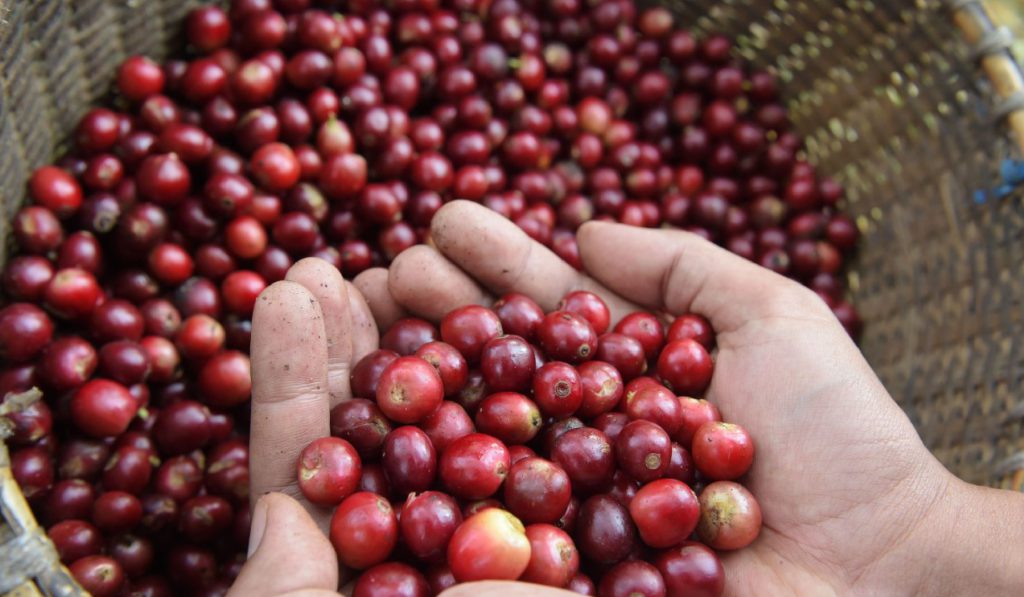
P’ Kaleb: I’ve been thinking about developing Robusta ever since Fuadi and Miguel (R. Miguel Meza, a coffee producer and founder of Paradise Coffee Roasters in Minisota and Hawaii) shared with me the idea that if someone could produce good Fine Robusta, it would taste a lot better. So I told myself that if I ever had the opportunity to buy Robusta coffee cherries, I would give it a try.
Q: As a coffee producer, how is Robusta different from Arabica?
P’ Kaleb: I consider Robusta and Arabica two different types of coffee, it’s like comparing lemons and pomelo. They are both members of the same plant family, but they serve different purposes. On one hand, you may be right if you say Arabica is better because it’s better brewed as a drip coffee. On the other hand, if you want to brew coffee to mix with milk or make iced coffee, Robusta has favorable properties that Arabica does not, whether it’s the body or compatibility with milk. So, if you’re comparing which coffee type is better, you might have to ask yourself, “What will I be using this coffee for?”
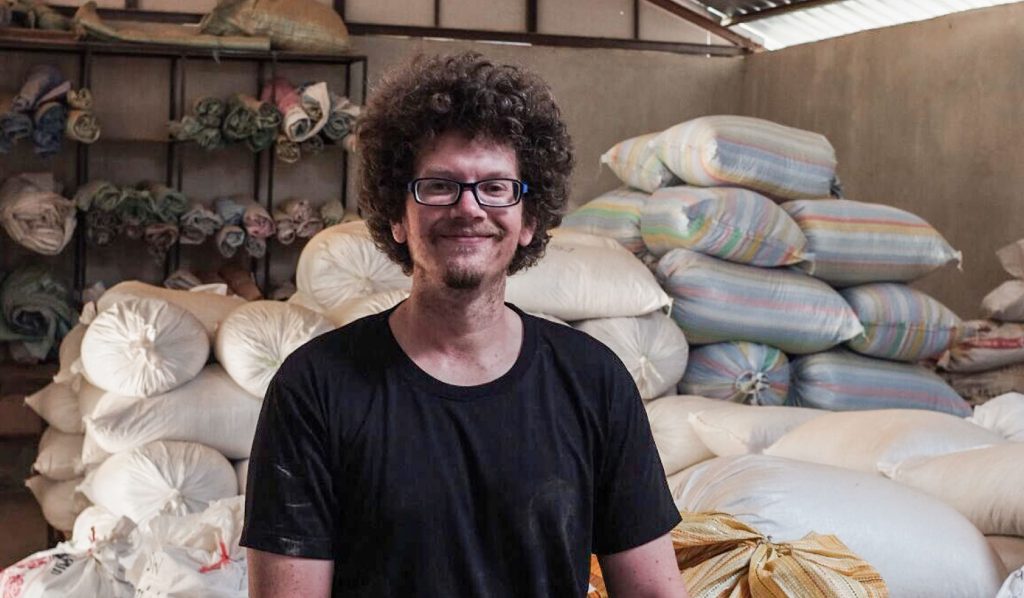
Q: What were some difficulties that you faced while developing Robusta?
P’ Kaleb: In the first year, I used the same processing methods as Arabica. It taught me that these two types of coffee required different processing methods, so I started the Robusta process from scratch, learning through trial and error. For example, the drying method of coffee cherries. Arabica is typically dried in the shade, where the temperature is not too high. However, the drying process for Robusta requires it to be hotter than that, so drying it on cement produces better results than drying it on a raised bed. There are so many methods we use for Robusta that are opposite of Arabica, and some ways that have never worked on Arabica had a better response from Robusta. I’ve been experimenting for about 4-5 years now, and I admit that I know very little and still have a lot to learn.
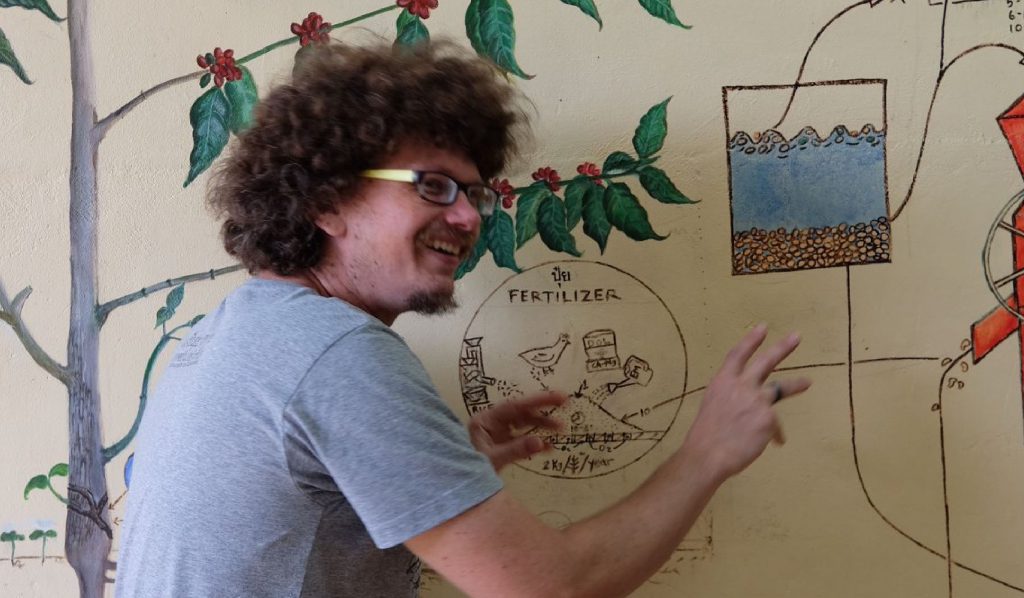
Q: What is your motivation for investing in the development of Robusta, given that everything started from scratch?
P’ Kaleb: In the future, I believe that Robusta could potentially be a substitute for corn because the areas used for corn cultivation are also suitable for growing Robusta. Although the selling price of Robusta is not much higher than that of corn, the cost of producing it is substantially lower. That is, once you’ve planted Robusta, you won’t have to buy new seeds every year, plus it’s also environmentally friendly as it does not require chemical fertilizers. When you reduce these production costs, you won’t have to worry about losing sales numbers when corn prices fall. In my opinion, Robusta is far more sustainable than corn.

Although there is one obstacle with selling Robusta, and that is the market’s response. The majority of people see Robusta as cheaper than Arabica, yet the cost of producing both types of coffee is the same because they both rely on labor to collect coffee cherries. The retail price of Robusta is half of Arabica, which doesn’t make sense to me.
The next challenge we’ll have to address is how to get people to place a higher value on Robusta and willingly pay more for it. From my perspective, the only way to get the market to change its perspective on Robusta is first to show them what it’s capable of. People will not know it’s possible unless someone dares to do it first.
Q: What’s the current image of Robusta in Thailand?
P’ Fuadi: Thai Robusta meets global Robusta standards in terms of quality. The issue we’re facing is that our Robusta prices are higher, which means we have to tell stories from a different angle in order to sell. From a farmer’s standpoint, selling at a higher price is advantageous, but it makes breaking into the global Robusta market more challenging than Robusta from other countries.
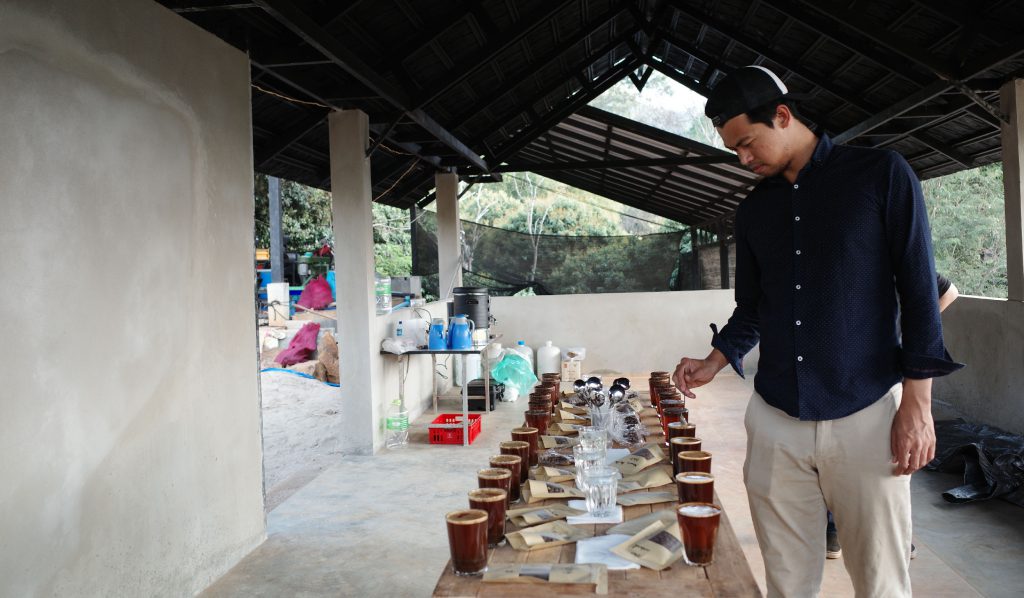
However, if we take the standpoint of Thai people who intend to produce good Fine Robusta, I believe that we can compete with Fine Robusta from other countries. Right now, finding decent Fine Robusta coffee in Thailand is significantly easier, implying growing interest. Take, for example, the Ranong and Chumpon coffee processors who are also producing Fine Robusta. So if you ask me whether Thai Fine Robusta will improve, I can confidently say that it will.
As for the Robusta processing methods, we haven’t tried and tested them enough. The coffee that P’ Kaleb and Roots collaborated on went through extensive testing, which is why it was recognized and praised by significant people in the coffee industry worldwide after its release. According to them, it is a coffee lot that is undergoing a paradigm shift, gradually reshaping the image of Robusta.
Q: After hearing this feedback, how do you feel about it?
P’ Kaleb: I was overjoyed! When I tasted it myself, I thought it was okay, but hearing the positive feedback was very encouraging. There’s so much more opportunity to access good Robusta in other countries, such as Mexico, India, and Uganda, that I never imagined Thai Robusta could be special. Nonetheless, I believe it will improve over time because the Fine Robusta scene is just getting started. We got off to a good start, and we’re heading in the right direction, but there’s still a long way to go. I’m incredibly excited about this!
Q: What did you have to go through before you started processing Robusta with yeast?
P’ Kaleb: For the first 2-3 years, it was all trial and error until I noticed a trend in fermentation methods that worked on Robusta, at which point I kept working on this method and adjusting details here and there. Robusta responds so well to yeast because it requires a higher processing temperature than Arabica, which also happens to be the temperature at which yeast works so well, allowing it to bring out the best flavor.
Another thing is that the coffee farmers intended to collect the red Robusta cherries from the new plantation specifically for me. We get to enjoy Robusta coffee because of the skills of the coffee farmers.

Q: What are some of the things you hope to see happen once coffee drinkers open their hearts to Robusta?
P’ Kaleb: To be honest, I don’t expect everyone to enjoy Robusta because we all have different tastes in what we like and dislike. What I’m hoping for is to change people’s perceptions of Robusta as a cheap coffee used in sugary drinks that cause weight gain, rather than being added on purpose to bring out good flavors or to improve the taste of a cup of coffee. I think 99% of coffee drinkers still believe this, so if we can change the story of Robusta, the coffee industry in Thailand will be much more enjoyable.
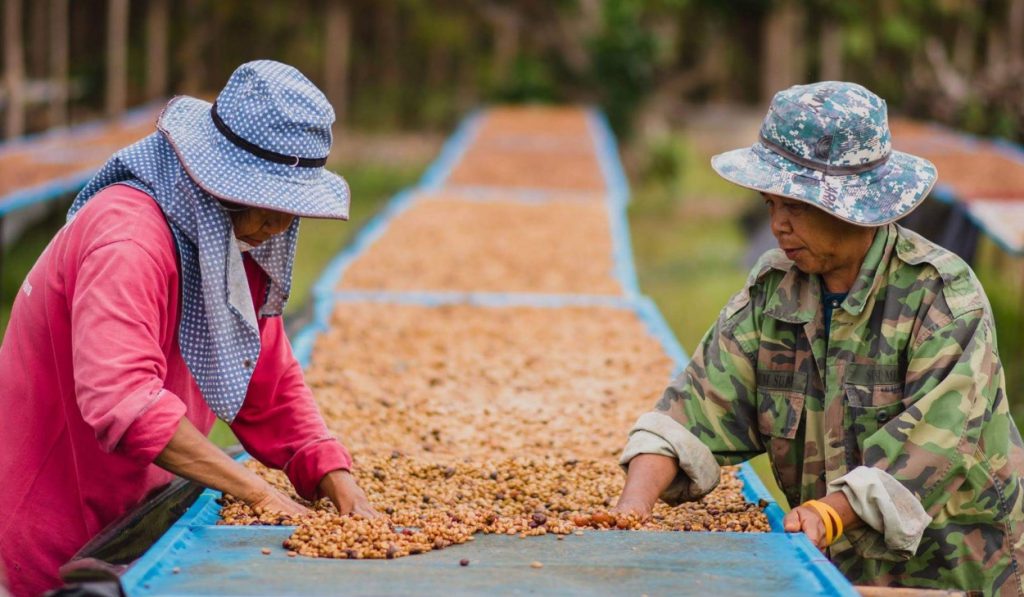
P’ Fuadi: I want Robusta to become the norm. I want to see a Specialty coffee cafe with Robusta on the menu. It doesn’t have to be a Single Origin; it can be a blend because adding Robusta to a blend adds depth and dimension to the cup of coffee. Everything would improve if we had more truly good Robusta. In my opinion, the fact that P’ Kaleb’s Robusta has been globally admired proves that we are moving one step closer. What remains is how we get the market to open their minds to it, and the answer to this is larger than P’ Kaleb and I. We’ll need the help of others as well.
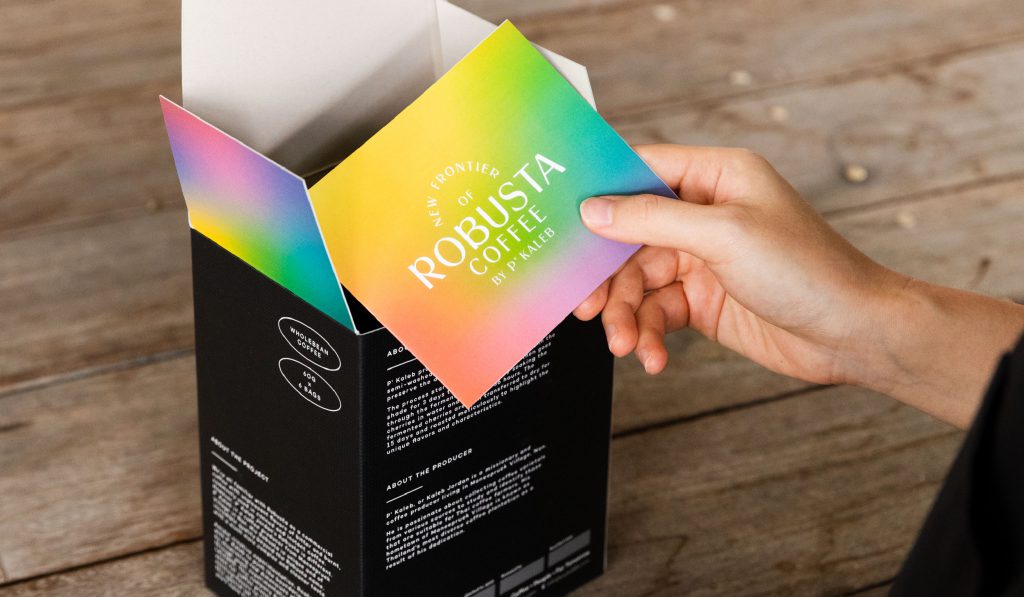
Although the development of Robusta has its challenges, with the great intentions and incredible energy of P’ Kaleb and P’ Fuadi, there is no reason why Roots would not want to invite our customers to come and be a part of this remarkable journey.
For anyone who wants to open their hearts and experience new things by trying out Robusta coffee, P’ Kalebs Robusta series is available in all Roots branches. Consider it another door to introduce you to the fun and delicious ways of Robusta.





